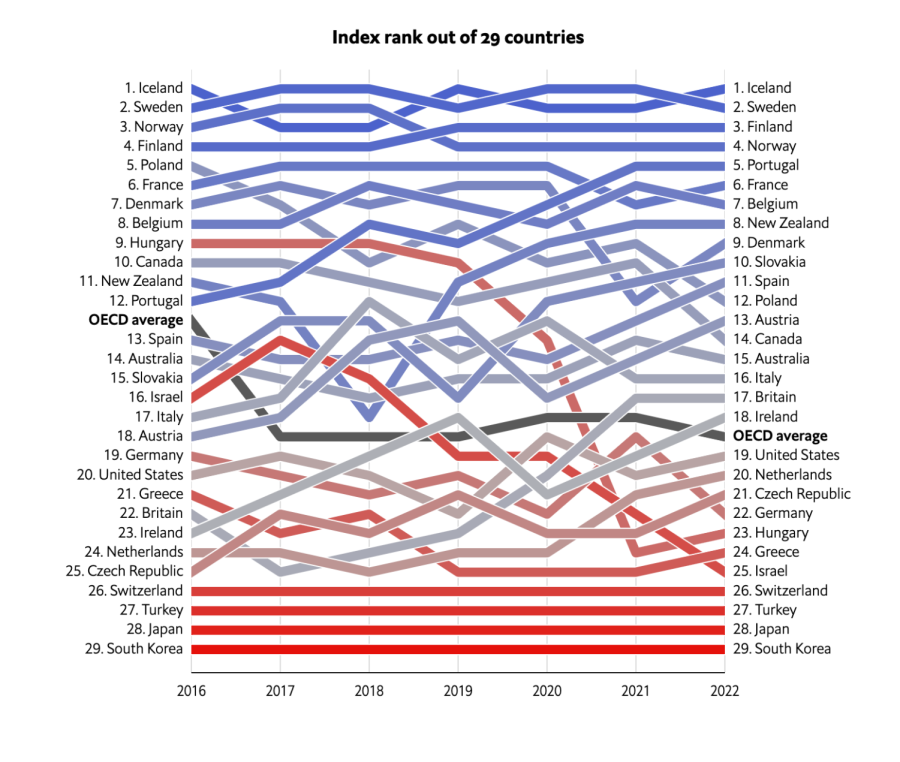Glass-ceiling Index Ranking about Women: U.S. Index Below OECD Average
The Economist, a British economic newspaper, announced an annual measure of the “rule and influence” of women in the workforce across the OECD club of mostly- rich countries on March 6, 2023. Nordic countries like Sweden and Iceland occupy the top rank and Japan and Korea account for the bottom two places. The U.S. is the 19th in 29 countries, ranked below OECD average. A country’s index is measured depending on the gender pay gap, parental leave, the cost of childcare, educational attainment and representation in senior management and political jobs. The U.S. index in 2022 shows a small improvement compared to 2021, however, the improvement is slight, compared to other countries like Austria and Ireland. Although the U.S. index rank was 19th in 2022,, in 2021, the rank was 21st, even lower than the current status. In saying so, the U.S. situation around women in the workforce is growing, however, compared to 2016, the rank doesn’t change.
Especially, in terms of women in parliament, net-child-care caste and gender wage gap, the U.S need to make an effort. In these fields, the U.S. is inferior to other countries. The indicators that have a broader impact on women, such as their participation in the workforce, are given greater importance than those that only affect a specific group of women, such as maternity pay.
We spoke to Natalie Ingraham, Assistant Professor of Sociology at California State University, East Bay, regarding the data and its reflection of women empowerment in the U.S. Ingraham researches gender, reproductive health, and LGBTQI+ studies.
Q: What do you think about the index? How do you analyze the index?
INGRAHAM: “I wasn’t familiar with this index before you sent me this article, so I’m not very familiar with the analysis used. However, the findings don’t surprise me. We see countries with a more robust social safety net and laws and policies that enforce gender equity across several sectors performing better than countries, including the U.S., that do not have these things.”
Q: Compared to 2016, the U.S. index is still below the OECD average in 2022. What hampers the empowerment of women in U.S. society?
INGRAHAM: “I think we have divisions in our society about things like gender norms and what the role of women in society should be based on differing ideologies that are influenced by intersections of things like race, class, and religion. There’s not a simple answer, but I think you could summarize as saying there has not been enough political will by elected officials to put some of the policies into place that would help improve the US ranking. Although many of the policies are popular amongst voters according to polls – things like subsidized child care, paid parental leave for all parents, gender pay equity, access to reproductive healthcare like abortion, or equity laws like the Equal Rights Amendment – we just don’t see elected officials or policy supporting these ideas.”











